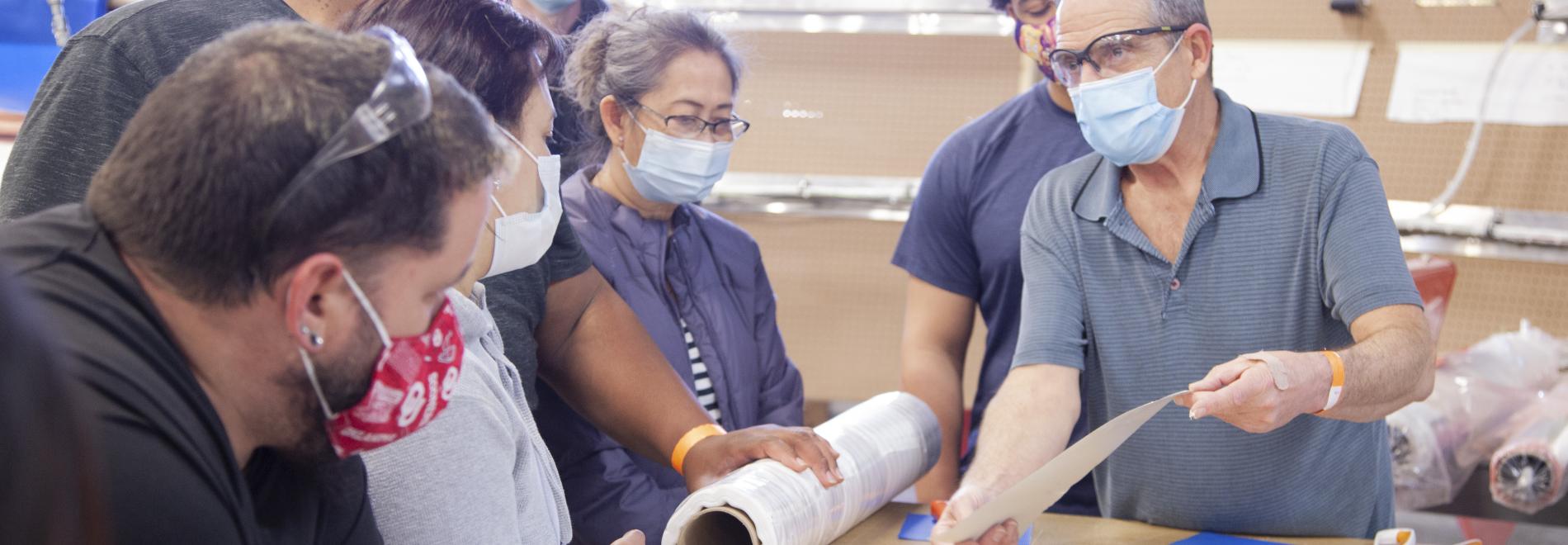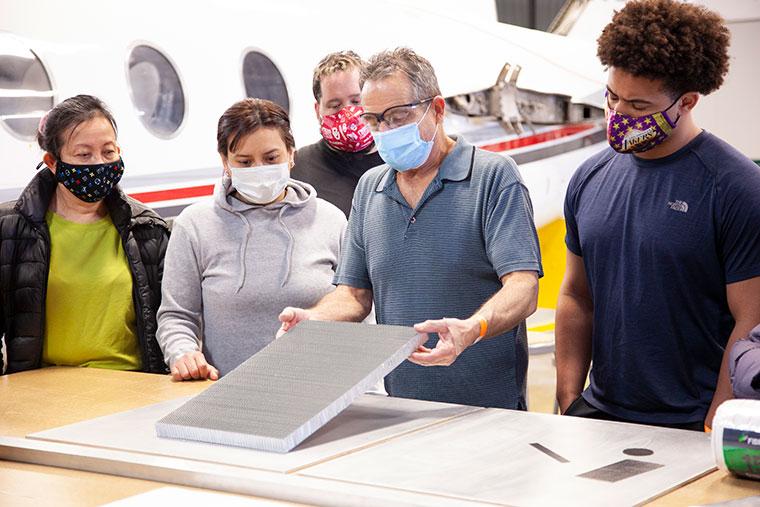Composites are a way into the industry and a window to its future
The growth of aerospace in Oklahoma has put the state at ground zero for changes in the industry.
Manufacturers are constantly working to make aircraft more lightweight, more efficient, safer, and easier to fly. It has led to a recent boom in the use of composite materials, and now Francis Tuttle Technology Center offers a whole program on mastering the creation and repair of these revolutionary products.
When instructor Mark Hynes first started at Tinker Air Force Base several decades ago, the subject of Composites & Fabrication Repair was brand new. Planes were made from sheet metal, and there was some skepticism that would ever change.
Now, not only has the manufacturing of composite materials become easier, it is reshaping the way we fly.
“What composites have done is they really took the corrosion factors out of the equation,” Hynes said. “The life expectancy of a composite aircraft is much longer than the conventional aircraft.”
Providing Jobs Today
One area for composites that’s already taking off is the construction and repair of drones. And as drones become more common, the need for people who know how to build and repair them will increase.
Kratos opened a facility in Oklahoma City in 2018 to manufacture some of its drones. Graduates of the Francis Tuttle Composites & Fabrication Repair program have since gone to work there. The successful relationship has helped create a talent pipeline between Francis Tuttle and the Oklahoma aerospace industry.
“Francis Tuttle’s 150-hour Composite Fabrication and Repair course has enhanced the ability of new technicians to “hit the ground running” when starting at the Kratos OKC Site,” said a Kratos company statement. “The operators from the composites course come with a wealth of knowledge and real ‘Lay-up’ experience that significantly reduces the training time. They come ready to make a difference on day one and have not been disappointed with the knowledge and experiences they gained while students at Francis Tuttle. We are thankful for the Francis Tuttle partnership and look forward to expanding our workforce training with their Lean and Industry 4.0 courses.”
The Composites class introduces students to the various materials and how they can be molded or manipulated. There’s a focus on safety, cutting to size, and assembly.
“It’s a lot of hand-eye coordination,” Hynes said. “It’s a lot of work, but it is a challenge, and you will enjoy what you do every day. I have not had one student who never got it.”
And once a student gets it, their options open up. The increasing use of composite materials is creating new job opportunities in both aerospace and related industries.
Hynes said the skill set students learn can be used to fit other manufacturing processes.
“There are a lot of industries that use this material,” Hynes said. “This is a job that can get you where you want to be in life. You can take this skill anywhere and work for anybody.”
Shaping the Future of Aerospace
The materials students learn to handle in Francis Tuttle’s Composites course are not necessarily new. What is new is the way those materials are used in the manufacture of aircraft.
“Some of the newer planes, like the new [Boeing] 787 Dreamliner, that’s a largely composite aircraft,” Hynes said.
The reason for the growth is simple: cost. It is now less expensive to build planes out of lightweight, sturdy, yet durable material than it used to be.
It has come along at just the right time. Rising fuel costs and increasing environmental concerns have created a burgeoning market for modern, efficient, and safe aircraft.
Aircraft made largely from sheet metal are certainly very safe. There are rigorous safety and endurance tests for both the plane and the materials, which is something Francis Tuttle students learn about in the Sheet Metal course.
But wear and tear over time is still an issue. Bolts become loose, connections have to be re-welded and shaped, and all of this contributes to the eventual end of the aircraft’s life.
These maintenance needs are almost eliminated by using composites. There will still be a need to maintain and repair aircraft, but it won’t be as prominent of a safety issue, Hynes said.
And as the expense of making aircraft out of composite materials comes down, and the need for more efficient aircraft and drones increases, the opportunities for people entering this area of the aerospace industry are growing.
“It’s unreal where we can actually take this,” Hynes said. “This hasn’t stopped morphing yet.”

